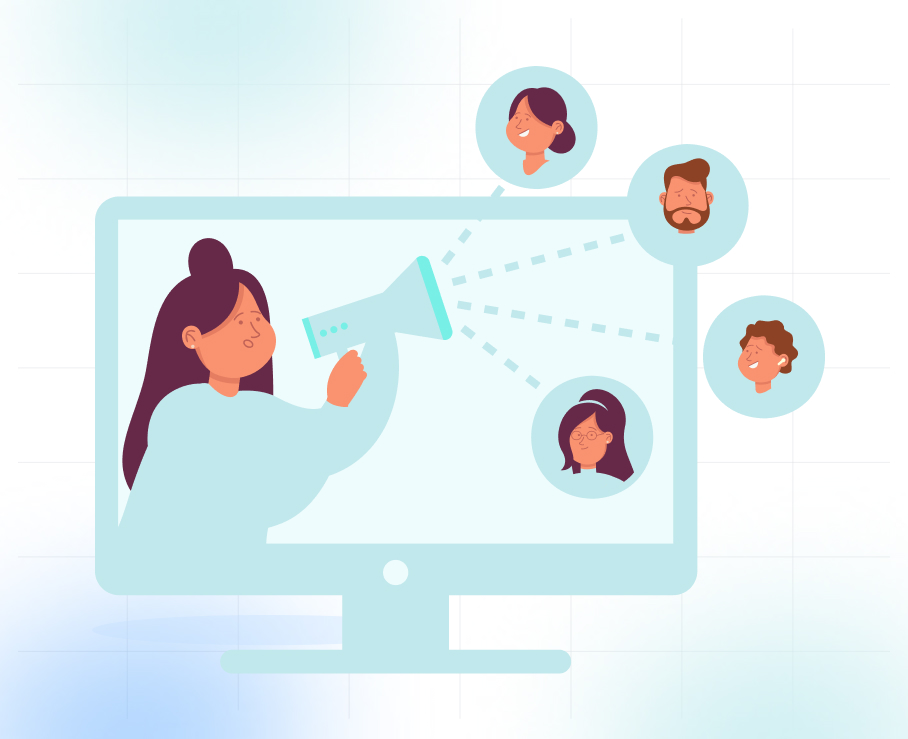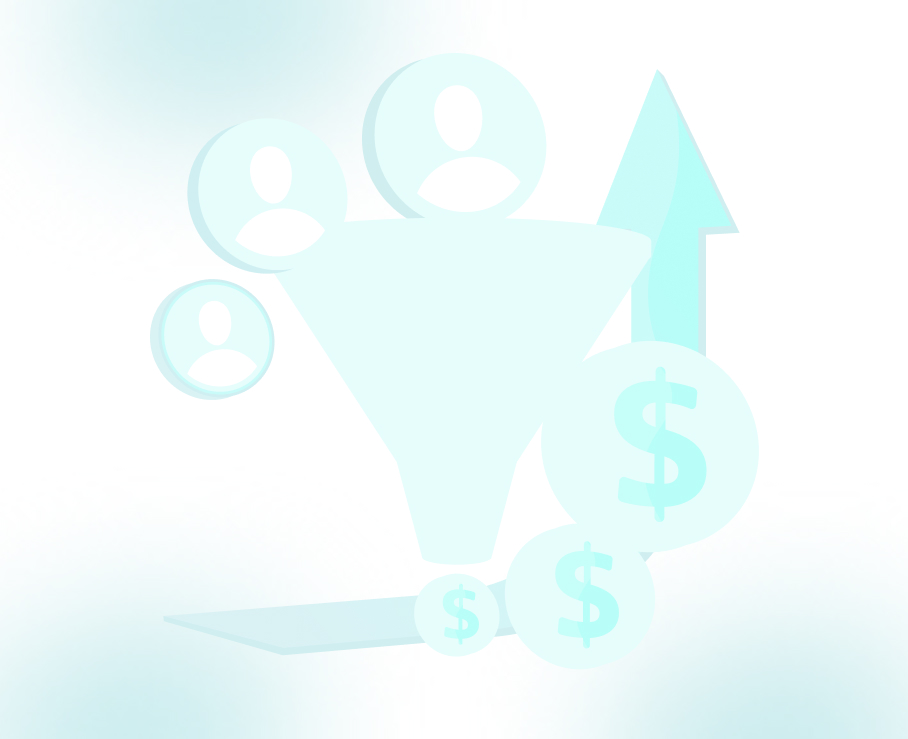
How to Master Email Marketing for B2B Lead Generation

Email marketing might be one of the oldest digital channels, but it’s far from obsolete. The very first marketing email, sent in 1978, generated $13 million in sales. Fast-forward to today, and over 4.4 billion people use email, making it one of the most universally accessible platforms for reaching decision-makers. No wonder 70% of marketers still rate it as delivering “good” to “excellent” ROI.
So why does email marketing still work, especially in B2B? Because when executed with precision, it doesn’t just inform. It builds trust, nurtures interest, and converts intent into opportunity.
In this blog, we’ll unpack how to make email marketing work for B2B lead generation, going beyond generic templates and outdated tactics. From strategy and segmentation to writing emails that get opened, clicked, and replied to, consider this your playbook for building high-performing email campaigns that move the needle.
What is B2B Email Marketing?
At its core, B2B email marketing is the process of using email to market products or services to other businesses. It’s different from B2C email marketing because instead of targeting individual consumers, B2B email marketing focuses on building relationships with other companies and the decision-makers within those companies.
The goal of B2B email marketing is often to nurture leads, share valuable content, increase brand awareness, and generate sales. It might look like sending newsletters, promotional offers, or industry insights to business leaders or departments within target companies.
With email marketing, you can stay top-of-mind with your audience, continuously deliver value, and guide potential clients through the sales funnel with timely, personalized messaging. But remember, success lies in targeting the right audience and delivering relevant content that addresses their specific needs and pain points.
Why is Email Marketing Effective for B2B Lead Generation?

So, why should you be investing time and resources into B2B email marketing for lead generation? The answer lies in the numerous benefits email marketing brings to the table.
- Direct Line of Communication: Unlike social media or digital ads, where algorithms control what people see, email gives you a direct line to your prospects’ inboxes. If your prospects have opted in to receive your emails, they’re already interested in hearing from you, making email marketing a highly efficient channel for reaching your audience.
- Cost-Effective: Whether you’re sending one email or thousands, the cost per email remains minimal. There are no printing or postage costs, and if you use an email service provider, your expenses are mainly tied to your subscription. Considering the average ROI for email marketing is significant, this makes email one of the most cost-effective marketing tactics out there.
- Personalization & Segmentation: The ability to segment your email list means you can send targeted content to various buyer personas, increasing relevance and boosting engagement. Personalization can go beyond just the name in the subject line; it can be based on previous interactions with your brand, their industry, and even the content they’ve shown interest in.
- Measurable Results: With tools like open rates, click-through rates (CTR), and conversion rates, you can see exactly how well your emails are performing. This data allows you to continuously optimize your campaigns by tweaking subject lines, adjusting content, and testing CTAs (calls-to-action) for better results.
Now that we understand why email marketing works so well for lead generation, let’s discuss the key strategies you need to implement to see success.
Key Strategies for Mastering B2B Email Marketing for Lead Generation

B2B buyers don’t respond to mass emails, they engage with relevance. To turn inboxes into pipelines, your email strategy needs to be precise, personalized, and performance-driven.
1. Group by Buying Behavior, Not Just Demographics
Most marketers segment by job titles or industries, but real traction comes from behavioral segmentation. Look at how your contacts interact with past emails, content, or your website. Did they open a pricing page? Download a case study? Attend a webinar?
These are stronger signals of intent than a static job role. By building segments based on what they do rather than who they are, you can send context-aware messages that reflect where they are in the buying journey. A prospect who’s comparing vendors needs a different email than one who's still exploring the problem space, regardless of their designation.
2. Personalize Your Content
Personalization is no longer optional, it’s the price of entry. But here’s the catch: automation isn’t personalization.
Most prospects can spot a “Hi [First Name]” email from a mile away, and the moment it feels like a bot wrote it, it’s ignored. True personalization goes beyond token fields. It means crafting content that reflects what the recipient actually cares about, based on recent actions, business context, or real-time needs.
Over-relying on automation creates the illusion of relevance without the substance. To stand out, invest time where it matters, on messages that sound like you wrote them for someone, not at everyone.
3. Focus on Content That Adds Value
B2B buyers don’t need another sales pitch in their inbox. They need answers. The most effective email campaigns treat content as a tool to solve real problems, not push products.
Your emails should reflect a deep understanding of the challenges your prospects face and offer practical insights that guide them forward.Think actionable frameworks, implementation checklists, or a breakdown of how companies like theirs tackled similar roadblocks.
For example, instead of simply listing your CRM’s features, share how companies in similar industries have tackled common challenges, like improving lead response time or reducing customer churn, using your solution. Real-world use cases and mini success stories help illustrate impact, making your content more credible and actionable for prospects.
4. Map Emails to the Buyer’s Journey
Not every lead is ready for a sales conversation, and your emails should reflect that. Generic, blanket-style campaigns often fall flat because they ignore where a prospect actually is in their decision-making process.
Effective email marketing is targeted, not just in who you send it to, but in what you say. Map your email content to different stages of the buyer’s journey. For early-stage prospects, share educational content that helps them define their challenges.
For mid-funnel leads, send comparison guides, product use cases, or industry-specific insights that support evaluation. For sales-ready leads, offer ROI calculators, customer proof points, or a direct path to consultation.
When every email matches the prospect’s current mindset, you’re not just sending another touchpoint, you’re guiding their next move with relevance and intent.
5. Use Clear Calls-to-Action (CTAs)
Every email you send should have a clear, actionable CTA. Whether your goal is to schedule a demo, download a resource, or book a consultation, your CTA should be prominent and compelling. Keep it simple, direct, and actionable. For example, instead of a vague CTA like “Learn More,” try “Book Your Free Demo” or “Download Your Free Guide.” Remember, a well-placed and strong CTA can drastically improve conversion rates.
These strategies can help you craft successful campaigns. Now, let’s understand how to track your success.
Real Results: Turning Cold Emails Into a $14,500/Month Opportunity
A software company in Dallas was struggling to scale beyond local clients. They’d worked with multiple lead generation agencies, but got little transparency, templated campaigns, and leads that never turned warm.
That changed when they partnered with TLM.
We assembled a focused team to manage the entire outreach process, from identifying the right contacts to crafting the emails and running the campaigns. Drawing on our understanding of the Dallas market, we tailored our messaging for different industries including automotive, retail, and financial services, ensuring each outreach felt relevant and well-timed.
In the first few months, the results were modest, one or two leads trickled in. But each lead was relevant and sales-ready, giving the client full control over who to pursue and when to invoice. Today, we consistently generate 3–4 meetings per month, helping them build a healthier, more predictable pipeline.
The best part? So far, they’ve booked $14,500 in Monthly Recurring Revenue (MRR) through leads sourced by our team, and continue to see steady traction each month.
Measuring and Optimizing Your B2B Email Campaigns

The key to improving your B2B email marketing efforts is continuous measurement and optimization. Email marketing tools provide you with valuable metrics such as open rates, click-through rates (CTR), conversion rates, and bounce rates. By analyzing these metrics, you can make data-driven decisions to enhance your future campaigns.
- A/B Testing: A/B testing, or split testing, is a powerful technique to determine which elements of your email campaigns are working and which aren’t. You can test subject lines, content layout, CTAs, or even the timing of your emails. By running these tests, you can continually optimize your emails for better engagement and conversions.
- Refining Your Strategy: Don’t be afraid to tweak your strategy as you learn more about your audience and the types of content that resonate with them. Over time, you’ll build a better understanding of what works, allowing you to send even more personalized, relevant, and valuable emails to your leads.
And to further improve your results, let’s look at some best practices that will keep your email campaigns on track.
B2B Email Marketing Best Practices

Beyond strategy and storytelling, the execution details can make or break your email campaign. These best practices will help ensure your efforts translate into real pipeline impact.
1. Clean Your Email List Regularly
B2B contacts move fast, people switch jobs, change roles, or become unresponsive. Continuing to email inactive or outdated addresses hurts your deliverability and signals to inbox providers that your content isn’t relevant. That’s why list cleaning isn’t optional, it’s a critical maintenance task. Run a hygiene check at least once a month: remove hard bounces, fix obvious typos (like gmial instead of gmail), and segment out cold leads. List cleaning ensures you’re sending to a smaller, more active group that’s far more likely to engage and convert.
2. Optimize for Mobile, But Don’t Sacrifice Depth
Over 60% of professionals read emails on their phones. That means your layout, subject line, and opening sentence must work within seconds. But mobile optimization doesn’t mean dumbing down your message. Use a responsive layout, short paragraphs, clear hierarchy, and strong formatting cues to maintain clarity without losing depth. Make it skimmable, but still worth reading.
3. Test, Learn, and Iterate
The best-performing B2B email programs treat every send as a learning opportunity. Run A/B tests across subject lines, CTAs, layouts, or content formats to see what actually resonates. Don’t just chase higher open rates, look at click-throughs, reply rates, and conversions. Over time, these small tests give you a playbook grounded in your audience’s behavior, not generic benchmarks.
4. Follow Compliance Laws and Lead with Transparency
Trust is currency in B2B, and mishandling inboxes erodes it fast. Regulations like CAN-SPAM (U.S.) and GDPR (EU) aren’t just checkboxes, they reflect how your audience expects to be treated.
Always include a clear unsubscribe link, your business identity and address, and avoid misleading subject lines or bait content. For GDPR-compliant outreach, make sure you’re targeting contacts based on legitimate interest, offering opt-outs, and respecting data access and removal requests.
When you lead with transparency and give people control over their inbox, you build credibility, something no clever copy can fake. So, what do these strategies look like in action? Here’s how one MSP used them to grow their lead pipeline in a competitive market.
Canadian MSP expands presence in BC through targeted B2B email outreach
A cash flow management SaaS company for lenders partnered with TLM to expand beyond their accounting firm niche. With increasing competition and a need for higher-quality leads in British Columbia, TLM launched a three-touchpoint email campaign backed by precise contact discovery and infographic-driven messaging. Within three months, the client was seeing 3–4 qualified leads per month, later scaling to 7–11. The client now averages six leads monthly and credits TLM’s targeted, data-informed outreach with helping them stay competitive and drive inbound interest. Click here to read more.
How TLM Can Drive Your B2B Lead Generation with Email Marketing
At TLM, we specialize in B2B email marketing strategies that are designed to deliver measurable and sustainable results. Our proven methodology is built on years of experience, helping businesses across various sectors, especially in SaaS and MSPs, optimize their email marketing to generate high-quality leads and increase conversions.
Here’s how our services can convert your B2B lead generation efforts into results:
- Targeted Lead Generation: We don’t rely on generic email blasts. Our strategy focuses on building precise, targeted email lists using advanced segmentation techniques. This ensures your messages reach the most relevant prospects, laying the foundation for highly effective campaigns.
- Personalized Email Campaigns: We know that generic emails fall flat. That’s why we craft personalized, audience-specific messages that resonate with each segment. This boosts engagement, improves response rates, and ultimately drives higher conversion rates.
- Appointment Scheduling: We streamline the process of booking meetings with qualified leads. This ensures your sales team spends less time chasing leads and more time closing deals.
- Account-Based Marketing (ABM): For high-value accounts, we deploy customized email strategies that speak directly to decision-makers, ensuring that your outreach is as effective as possible and accelerates the sales cycle.
- Data-Driven Optimization: We use TLM’s proprietary in-house tools with advanced analytics to track the performance of each campaign. This data-driven approach allows us to continually refine your strategy, so every email sent isn’t just activity, but a step closer to your goals.
Mastering B2B email marketing for lead generation requires a strategic approach. With the right services, tactics, and a bit of creativity, you can grab significant opportunities for your business and build long-lasting relationships with prospects and clients.
With TLM's expertise, you can turn your email marketing into a powerful tool for lead generation and business growth. We bring efficiency, precision, and results-driven strategies to help you achieve your B2B goals.






